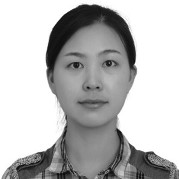Multi-Sensor Fusion for Target Detection and Tracking
A special issue of Sensors (ISSN 1424-8220). This special issue belongs to the section "Remote Sensors".
Deadline for manuscript submissions: closed (31 October 2023) | Viewed by 3835
Special Issue Editors
Interests: devleoping air-to-ground sensing algorithms for drones (e.g. classification, detection, tracking, localization and mapping)
Special Issues, Collections and Topics in MDPI journals
Interests: computer vision; image processing; object tracking; visual tracking
Interests: small object detection; multiple object tracking
Interests: visual tracking and machine learning
Special Issues, Collections and Topics in MDPI journals
Special Issue Information
Dear Colleagues,
With continuous applications in the civilian and military domains, object detection and tracking is drawing increasing attention. Visible light cameras are one of the most popular imaging sensors. Existing detection and tracking algorithms deal well with single-modal (visible) observation data and fail in dark or foggy scenarios. To address the above issue, Sensor fusion is indicated as an open research issue as well to achieve better detection and tracking results in comparison to a single sensor. In this special issue, multi-modal sensor data (i.e., visible, thermal, time, location, altitude, IMU) are collected in real-world outdoor environments. We believe the multi-modal sensor data can boost object detection and tracking performance. The expected outcomes of this special issue are of great theoretical and practical value for improving the environmental perception ability of robots or drones under complex scenarios.
Dr. Dongdong Li
Prof. Dr. Dong Wang
Prof. Dr. Yan Zhang
Dr. Yangliu Kuai
Guest Editors
Manuscript Submission Information
Manuscripts should be submitted online at www.mdpi.com by registering and logging in to this website. Once you are registered, click here to go to the submission form. Manuscripts can be submitted until the deadline. All submissions that pass pre-check are peer-reviewed. Accepted papers will be published continuously in the journal (as soon as accepted) and will be listed together on the special issue website. Research articles, review articles as well as short communications are invited. For planned papers, a title and short abstract (about 100 words) can be sent to the Editorial Office for announcement on this website.
Submitted manuscripts should not have been published previously, nor be under consideration for publication elsewhere (except conference proceedings papers). All manuscripts are thoroughly refereed through a single-blind peer-review process. A guide for authors and other relevant information for submission of manuscripts is available on the Instructions for Authors page. Sensors is an international peer-reviewed open access semimonthly journal published by MDPI.
Please visit the Instructions for Authors page before submitting a manuscript. The Article Processing Charge (APC) for publication in this open access journal is 2600 CHF (Swiss Francs). Submitted papers should be well formatted and use good English. Authors may use MDPI's English editing service prior to publication or during author revisions.
Keywords
- object detection
- object tracking
- multi-modal sensing
- multi-sensor fusion









